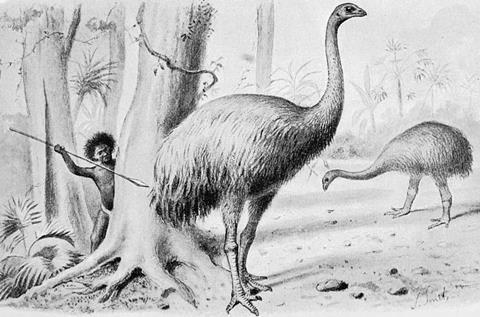A new study led by Cesar de la Fuente, PhD, Presidential Assistant Professor of Psychiatry, Microbiology, Chemistry, Chemical and Biomolecular Engineering, and Bioengineering at the University of Pennsylvania, has uncovered sequences for infection-fighting molecules in the genomic data of extinct species.

This most recent study in the emerging field of ’molecular de-extinction’, pioneered by Prof. de la Fuente, offers the potential to develop new antimicrobial treatments in the fight against rising antibiotic resistance.
READ MORE: AI helps mine genetic elements from ancient genomes to tackle antibiotic resistance
READ MORE: What microscopic fossilized shells tell us about ancient climate change
The study, published in Cell Reports Physical Science, analyzed genomic data from the extinct moa, a flightless bird from New Zealand, alongside genomes from two near-extinct species: a macaw and the Western black rhino.
Through advanced computational techniques, the research team identified ancient molecules called β-defensins, which play a critical role in host immunity. These molecules, preserved through evolutionary history, may lead to the creation of new antibacterial, antifungal, and antiviral therapies.
The full study is available here.







No comments yet